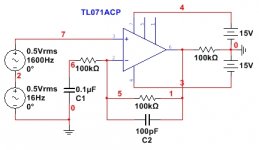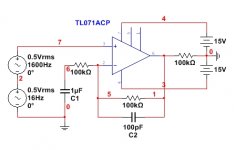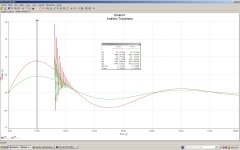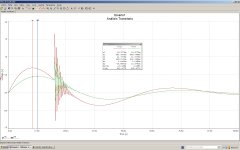@ScottJoplin
It is a way for me to explain a seemingly vivid location of the source of a sound but no visible source (like a ghost) at that point due to nature of reproduced sound, not live performance.
@DF96
Thank you, I get your point but do not necessarily agree. You have not seen publication about this either I presume.
It is a way for me to explain a seemingly vivid location of the source of a sound but no visible source (like a ghost) at that point due to nature of reproduced sound, not live performance.
@DF96
Thank you, I get your point but do not necessarily agree. You have not seen publication about this either I presume.
I understand, the speakers disappear?@ScottJoplin
It is a way for me to explain a seemingly vivid location of the source of a sound but no visible source (like a ghost) at that point due to nature of reproduced sound, not live performance.
The link in my last but one post goes a long way to explaining this@DF96
Thank you, I get your point but do not necessarily agree. You have not seen publication about this either I presume.
Yes, almost dissappear, sound field seems to have no definite border. I downloaded and slowly digesting the Pinna and Realism link you pointed. Again, thank you. 🙂
The very simple experience that I can contribute, shows that the differences between the phases of two amplifiers alters the precise temporal occurrence between the different sounds of a musical passage. For example, if you take two muffled sounds, but of frequencies well differentiated from each other and of different occurrence in time, and if these same signals are passed through two amplifiers whose phases differ significantly around the margins of the band audible, it will be verified that the temporal difference between these two sounds will be modified to a much greater extent in that amplifier whose phase deviates more than ideally. All this occurs simultaneously with the alteration of the amplitude envelope of the signal and the energy with which it is imparted to the output.






At the output of the amplifier with the phase farthest from the ideal, the first peak of the damped signal with the lowest frequency moves away from the first peak of the highest frequency damped signal.






At the output of the amplifier with the phase farthest from the ideal, the first peak of the damped signal with the lowest frequency moves away from the first peak of the highest frequency damped signal.
Last edited:
...two laterally spaced ears with small apertures to differentiate where a sound source is located in 3d space without a requirement for additional vertically spaced ear opening. ....
In real life, we get vertical cues from reflections (ground, ceiling) and experience in the space. Also as DF96 says, head-tilt.
Go watch your dog watching birds in the woods. Some dogs have the additional feature of mobile ears, so they can "point" different ways without tilting the head, but it is the same thing done better.
Yes, moving our head seems to help pinpoint the source better, but I think I am still able to somehow hear directional cues even when standing relatively still without having to move my head with one ear listening to a hands free earphone. That saved me on occasions on several construction projects. I grew up on a countryside, perhaps city folks need to train for that, I have no idea. I can not assume hearing is the same for everyone, not even for both ears on the same person. Like NP said, some people hear it, some don't, and even less do care.In real life, we get vertical cues from reflections (ground, ceiling) and experience in the space. Also as DF96 says, head-tilt. ...
You are right, you are able to localise sound without moving your head, it's just that moving your head can help. Localisation can be done with one ear with the help of your own personal pinna transform function. When it comes to height perception it is the pinna alone which provides the cues. Unless the stereo recording contains the spectral cues that correspond to the way your pinna filters the sound there is no mechanism for you to localise it in the vertical plane. There are generic approximations of pinna transforms in recordings, so long as they're done specifically, but the chances of these working for any individual are remote.
Blind tests are more "scientific" than sighted tests. If the test is 'can we distinguish X from Y in test Z?' then we do not need to specify what it is about X and Y that we are testing; it is X and Y we are testing.
One assertion was that lower feedback produces a different result from higher levels which is true. But since multiple parameters change, how can this be scientific? You should be able to make a determination why A is different from B based on analysis of parameters.
One assertion was that lower feedback produces a different result from higher levels which is true. But since multiple parameters change, how can this be scientific? You should be able to make a determination why A is different from B based on analysis of parameters.
The original observation was subjective. It is not, I believe, measurable.
So, following the logic, how can be objectivise the subjective? I'm not being cute, this is a real issue. After all, can we measure the difference between Salieri and Mozart Concertoes using measurement?
Thanks Indra, some very interesting points here......
Here is a scientific study by Univ of Sydney where subjects wore in-ear monitor earphones to remove contributions of pinna, shoulder reflection, head tilt etc. The researchers measured the subjects’ own Head-Related Transfer Function (HRTF) and then manipulated the spectral content of broadband noise with that HRTF which was then played back to the subject via the IEMs to form a virtual auditory signal. Subjects were placed in an anechoic chamber and fitted with sensors to show head pointing orientation. Using the synthetically processed subject’s own HRTF played back via the earphones, subjects could clearly localize the virtual source in 3D space (vertical position included). The vertical image information can only come from spectral (phase) cues in this test as only two earphones were used. So yes, 3D image via two earphones, and elevation could be determined even more accurately with a monoraul spectrum. So yes, spectral content and phase are significant in spatial cues (including elevation).
https://papers.nips.cc/paper/1731-spectral-cues-in-human-sound-localization.pdf
https://papers.nips.cc/paper/1731-spectral-cues-in-human-sound-localization.pdf
Last edited:
Yes, thank you, it's fascinating stuff, I shall read through that. I don't think anyone here is denying any of that. Have you tried the LEDR test I linked to earlier?So yes, spectral content and phase are significant in spatial cues.
https://papers.nips.cc/paper/1731-spectral-cues-in-human-sound-localization.pdf
Why X and Y are different is a completely separate issue. The blind test is to see whether they sound different.spladski said:You should be able to make a determination why A is different from B based on analysis of parameters.
So a stereo recording can contain proxies for vertical information. So what? As we do not have a reference phase to work from (which would be real vertical information) all we require is that the two amplifier channels are alike and reasonably flat (unlike, for example, speakers - which are never flat and so rarely alike).
And it is quite baffling that amplifiers with transformer output with significant phase shift @ > 10kHz like many tube amps still produce a strong holographic 3D presentation.... So yes, spectral content and phase are significant in spatial cues (including elevation)...
Sure, nobody ask you to do other than what you want, as others are also free to do as they see fit. There is nothing wrong to seek greater entertainment, audio reproduction is no dialysis. 🙂... So a stereo recording can contain proxies for vertical information. So what? ...
Last edited:
Yes, thank you, it's fascinating stuff, I shall read through that. I don't think anyone here is denying any of that. Have you tried the LEDR test I linked to earlier?
Online LEDR™ Sound Test | Listening Environment Diagnostic Recording Test
Yes, just tried it and all but the “behind” one works quite dramatically. Clearly, there is up and down information that cannot be denied. Tested on OB-1 headphones which had the sound rise up and go from left to right and right to left on the “Over” test, but with headphones, the sound rose above me with me underneath the arc. With speakers, the sound was an arch in front of me where the speakers are located (depth, height, and lateral extent).
Very nice sound tests showing the significance of the pinna transform and apparently, my pinna transform is close to the synthesized one. I think the
“Behind” one may not be working well due to too many reflections in my room since I changed floor carpeting for wooden floors as it works on headphones.
As a bonus test, I also listened to speakers with a Bluetooth wireless connection which then went to my preamp and then amp and speakers. For the record, this is a Sanwu $7 BT card with built in microSD card reader, volume and track control buttons. Preamp is Aksa Lender Melbourne, and power amp is MOAMOFO (zero global feedback), speakers are my own design ScanSpeak 10F/Dayton RS225-8 with passive first order transient perfect XO.
Yes, even with a BT connnection, it worked well. This really reaffirms my suspicion that the BT connection sounded as good as a traditional RCA cable. I think Valery might appreciate this as well. I will continue to stream from my phone to BT more often now knowing pinna phase info is preserved.
Thanks for the link to the test.
That's a good result, note that if it doesn't work, your speakers or listening environment are at fault, or the pinna transform used is too different from your own. Nowhere is it suggested that it's anything to do with the amplifier 😉All the LEDR test except the one going behind, played on my single driver, works for me.
Thanks for the link to the test.
You're welcome, it's a good site with useful tests and links. Your results are very good, and it goes to show what is possible with well set up equipment and suitably recorded material.....which is the crux of the issue 😉 how much is?
To me it only means that effects of amplifier non linearity on sonic perception are left as an exercise for the student. 😀... Nowhere is it suggested that it's anything to do with the amplifier 😉
Yep, so wouldn't it be good if we could identify the non linearities which increased our perception of space, perhaps including height?To me it only means that effects of amplifier non linearity on sonic perception are left as an exercise for the student. 😀
- Home
- Amplifiers
- Solid State
- Question regarding phase differences of amps.